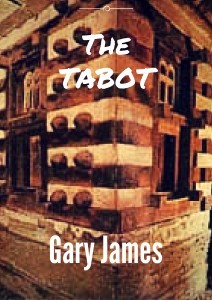THE TABOT – Introduction
 Tabot is an Ethiopian word that means “Ark of the Covenant” the Mosaic biblical relic that was in the custody of King Solomon, according to biblical and historical accounts. The Ark of the Covenant’s advent is the basis for the storied victories recorded in Old Testament biblical narratives wherein, ancient Israelites were delivered from certain destruction, or they were able to advance their journey by way of the miraculous Ark of the Covenant. The famous Ark remains an enigma today as stories continue to be published regarding the alleged travels of Ark over millennia and there is high speculation as to its current resting place. The alleged travels and final destination of this religious relic include Europe, Middle East, Asia and Africa, and several theories remain active. In addition, there is no shortage of novels, movies and literature from divergent perspectives regarding the ancient mystery embodying profound intrigues pertinent to the Ark of the Covenant. Various role players are highlighted in the plethora of mysteries and intrigues including the Knight Templar’s, “secret societies” and religious orders, too numerous to mention, and they all assert unique connection with the biblical relic.
Tabot is an Ethiopian word that means “Ark of the Covenant” the Mosaic biblical relic that was in the custody of King Solomon, according to biblical and historical accounts. The Ark of the Covenant’s advent is the basis for the storied victories recorded in Old Testament biblical narratives wherein, ancient Israelites were delivered from certain destruction, or they were able to advance their journey by way of the miraculous Ark of the Covenant. The famous Ark remains an enigma today as stories continue to be published regarding the alleged travels of Ark over millennia and there is high speculation as to its current resting place. The alleged travels and final destination of this religious relic include Europe, Middle East, Asia and Africa, and several theories remain active. In addition, there is no shortage of novels, movies and literature from divergent perspectives regarding the ancient mystery embodying profound intrigues pertinent to the Ark of the Covenant. Various role players are highlighted in the plethora of mysteries and intrigues including the Knight Templar’s, “secret societies” and religious orders, too numerous to mention, and they all assert unique connection with the biblical relic.
Ethiopian theology and history record that country’s unique association with the Ark of the Covenant. The story begins with accounts of a romantic relationship between King Solomon and Queen of Sheba that resulted in a male offspring. Old Testament (1st Kings) offers an account of the Solomon and Sheba nexus, and there is an account in the Quran, Islam’s holy book, outlining the ancient story. The Kebre-Negest (Ethiopian text) tells an in depth exposition which is the Ethiopian version of the relationship marking the beginning of the line of King David, and the Judaic heritage and tradition in Ethiopia. Briefly summarized, Menelik I (son of Solomon and Sheba), studied under his father in Jerusalem when he became of age. Following the completion of his studies and training, Menelik I, was consecrated as the first emperor of Ethiopia, and was dispatched to the country, 1000 BC. Menelik I, began his journey to Ethiopia with an entourage of first born from the court of King Solomon, along with relevant religious monastic orders. During the process of leaving members of his entourage took the Ark of the Covenant and left a fake Ark in its place. Hence the Ark was relocated to Ethiopia where it remains, and the Ark is safeguarded by the Levite priesthood. The Levite priesthood has safeguarded the Ark of the Covenant from then to now!
The Ethiopian Orthodox Church liturgy adheres to an ancient Judeo-Christian tradition as the Ark of the Covenant (Holy of Holies) is intrinsic to the Ethiopian Orthodox Mass ritual. There is a replica of the Holy of Holies behind a curtained enclosure on the Alter, which is retrieved by the celebrant priest at the appropriate time during the Mass celebration. The Ark of the Covenant is unique to the Ethiopian Orthodox Church Mass, and this ancient form of Judeo-Christianity is also known as “Tabot” Christianity. Hence, the Ethiopian Orthodox Church is known as Tabot Christianity. Judeo-Christianity became the state religion in 330 AD under King Ezana, which was directly in response to Emperor Constantine’s consolidation of the faith under the authority of the Roman Catholic Church.
During the proceedings of the Nicene Council, the Ethiopian Bishops were excommunicated, branded as heretical and excluded from all future ecumenical councils. The proceedings of the council revealed irreconcilable theological differences between Ethiopia and Rome relative to the faith, not the least of which was the dichotomy regarding the nature of Christ. The Ethiopians adhere to the doctrine of monophysitism (divine nature of Christ), while Rome advanced Christ as having a duel nature, vis-à-vis, part human and part divine. The controversy that occurred between Ethiopian and Rome is recorded as the east vs. west schism. Following Constantine’s ecumenical council of 325 AD, the Roman Catholic Church engaged in various intrigues in Ethiopia that were ultimately identified as nefarious with objectives to undermine the indigenous church. During subsequent centuries, nefarious intrigues by various Roman Catholic monastic orders, ultimately caused Ethiopia to close its doors to the west, during the 16th century.
Judaic theology (Judaism) in the framework of the “messianic expectation” came to Ethiopia when Menelik I and his entourage of first born, established the first Ethiopian, Solomon dynastic line, under the authority of the Order of the Lion of the Tribe of Judah (1000 BC). Among the entourage was the Order of the Magi, which established the heritage of Balthazar, in the country. 1000 years going forward, a priest in the Order of Magi, Balthazar joined with two other priests, Melchior and Gaspar, and the triumvirate journeyed in anticipation of the messianic expectation. The three wise man of the Magi, presented offerings to the infant Jesus Christ. Balthazar’s offering was myrrh, a pungent sap from thorny tree that symbolized Christ’s impending sacrifice.
After presenting his offering, Balthazar returned to Ethiopia and issued the “Nezgid” (call to worship), which was the basis for establishing the first Judeo-Christian community in Ethiopia. Accordingly, the heritage of Balthazar is a covenant with the Ethiopian Orthodox Church. Three hundred plus years after the fact of Christianity (325 AD), Emperor Constantine consolidated the heretofore diverse Christianity, under the single authority of the Roman Catholic Church and Ethiopia was excommunicated. From the 4th to the 16th century the Roman Catholic Church enjoyed a virtual monopoly on Christianity in the western world until the advent of the Protestant Reformation, wherein the faith divided between Catholics and Protestants. Since the Reformation, denominational Christianity has proliferated around the world, and is currently expressed in many diverse traditions. There is irony in the vast diversity and appropriation of the Judeo-Christian faith as it currently is a reflection to its earliest times.
Similar to her daughter Egypt, Ethiopia enjoys an ancient and prolific history of monasticism which has served to safeguard, defend and perpetuate her Judeo-Christian tradition, heritage and religion. Over millennia Ethiopia’s monastery system was extended by way of familial responsibility to defend and safeguard the faith in the framework of their monophysite doctrine. There is a longstanding oral and symbolic tradition that takes the form of esoteric Judeo-Christianity, which resides parallel to the popular (exoteric) celebration and worship modalities in the Christian faith. In that regard, there is a dichotomy between the Parish Priest as compared to the monastic priest (monk). In Eastern Orthodox tradition priestly orders are inclusive of the parish priest or the monastic order. Monasteries and monastic orders enjoy a rich and colorful history and they remain central to the ancient as well as contemporary religious orbit of Ethiopia, its heritage and tradition.
The visitation by the three priests (wise men) of the Magi is referenced in the New Testament Gospel of Mathew, but little else is recorded of the Magi in the popular bible narrative, prior to, or subsequent to the birth of Jesus Christ. The ensuing 300 years from the birth of the Christ, bore witness to utter barbarity in the context of mans inhumanity to man, vis-à-vis, the Roman Empire. The barbarity of the empire’s military footprint distinguished the world until Emperor Constantine’s converted to the Christian faith. The Treaty of Milan (313 AD) ended the legal confiscation of the property of Christians, and in 325 AD, Constantine in the framework of the Council of Nicaea consolidated Christianity under the authority of the Roman Catholic Church.
There is irony in the fact that Constantine established Rome as the Roman Catholic Church headquarters in the west, while the eastern realm was established at Constantinople, effectively overshadowing the Eastern Orthodox forerunners of the Church of Rome. Queen Helena Augustus (mother of Constantine), was the point person who identified the construction sites for the “Church of the Nativity” and the “Church of the Holy Sepulcher” among other holy sites that define Christianity in the world today. There are more than 2 billion Christians currently in the world today, they are approximately equally divided between Catholics and Protestant’s, but among them is about 500,000 Eastern Orthodox Christians.
During the process of 1200 plus years of Catholic domination in the western hemisphere, many people for various and sundry reasons were burned at the stake at the hands of the “Inquisition,” and many books and libraries were torched. Countless religious manuscripts were secreted away, or destroyed by marauding Roman solders, seeking “heretical” documents. Documents that somehow emerged into the public discourse were ultimately labeled apocryphal and discredited for lack of authority, or unknown authority. The official canon of scripture of the Roman Catholic Church was the Latin Bible, also known as the Vulgate. The original Old Testament and New Testament was written in Hebrew, the scripture was than translated into Greek, also known as the Septuagint, and than to Latin, the Vulgate. In the translation process the 81 book that comprise the Hebrew version was reduced to 73 books that comprise the Latin Bible, while there are a total of 66 books that comprise the Protestant Bible.
The first English translation of the bible was published in the early 1500s, and it was called the “Tyndale” Bible, named after the author. The next English translation of the bible was the “Wycliffe” Bible, which also bore the author’s name. Both authors were promptly burned at the stake by the Roman Catholic Inquisition for their abominable act of heresy. The first successful English translation of the holy book was the King Henry VIII’s bible, which he authorized following his brake with papal authority, establishing the Church of England. The King James translation of the bible was published during the 1600s and it is currently the most popular bible today.
Protestant denominational Christianity and the King James translation of the bible predominates the biblical story in North America, while Roman Catholicism predominates the faithful in South and Central America. In deed the European Christian authorities that conquered and settled the “New World” (Caribbean, North and South America) emanates from a revisionist Greco-Roman historical narrative. On the other hand the Eastern Orthodox historical Christian narrative is a parallel account to the popular western iteration of pertinent ancient religious and historical events. Consequently, there are parallel accounts of the advent and procession of Judeo-Christianity, one from the east and the other from the west. A comparative perspective of both eastern and western accounts of Judeo-Christianity and world history offers a holistic perspective.
In his history classic book entitled the “Iliad” Homer, the Greek historian speaks volumes of his reverence for the Ethiopian’s and credits them as making a considerable contribution to his education. Other consequential Greeks have confirmed assertions made by Homer relative to the profundity of Ethiopia, “Land of Punt” home of the Gods… Accordingly, Ethiopians and Egyptians were held in unique esteem by the Greeks of historical consequence.



